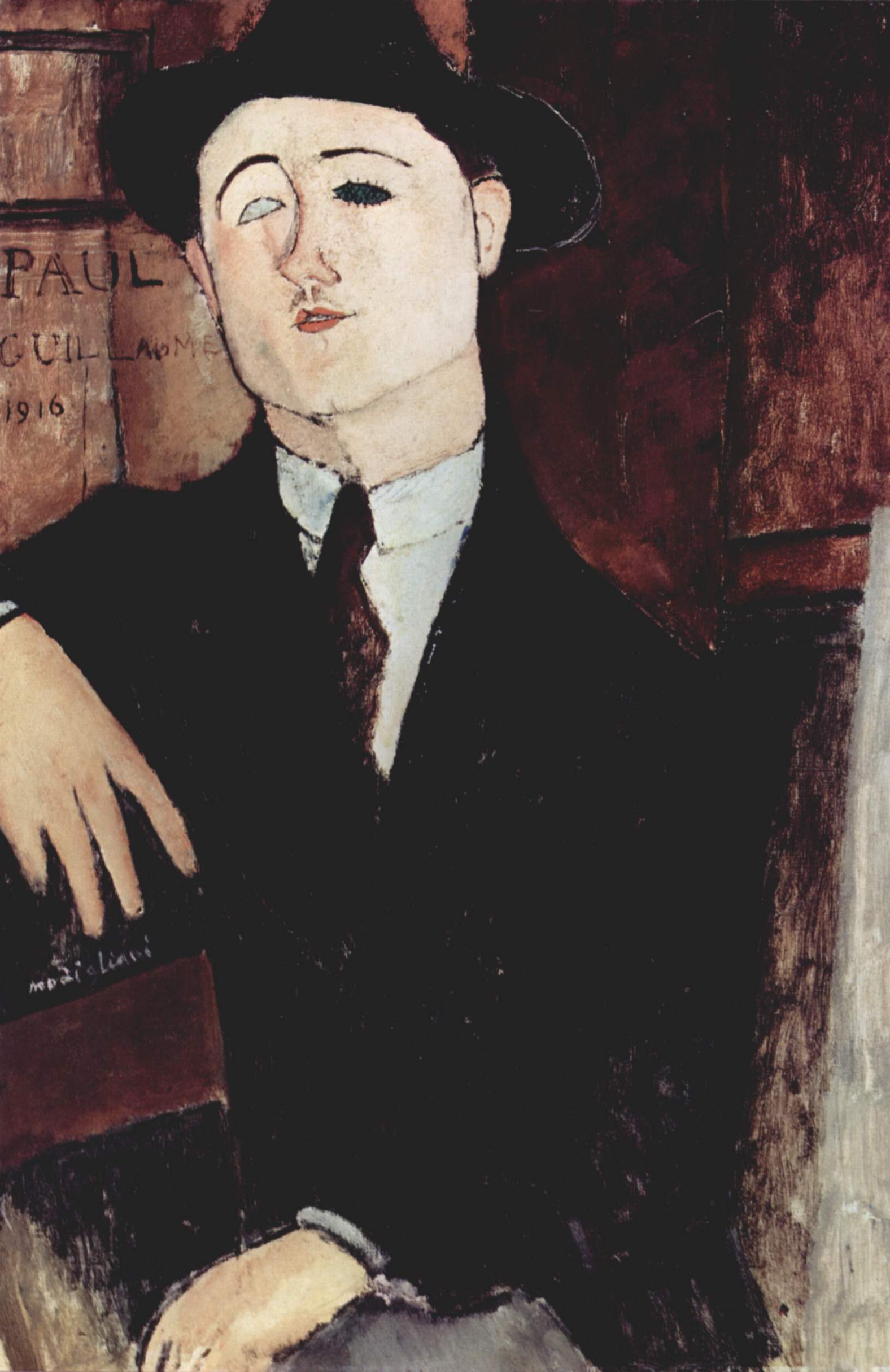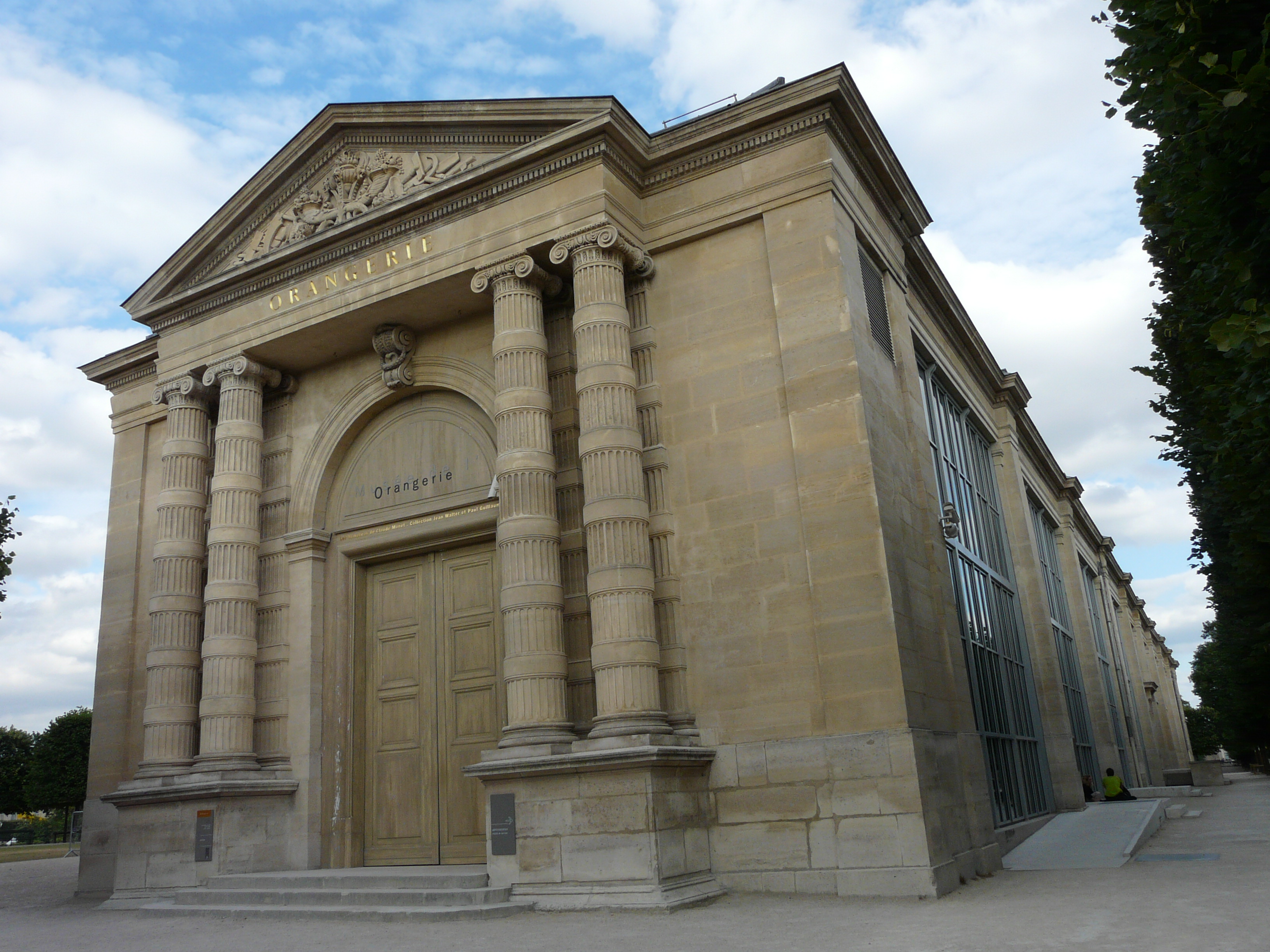Amedeo Modigliani, Paul Guillaume, New Pilot1915, Paris, Musée de l’Orangerie © RMN-Grand Palais (Musée de l’Orangerie) / Hervé Lewandowski
An exhibition at Musée de l’Orangerieexpected from 20 September 2023 to 15 January 2024, puts the spotlight on one of the most emblematic moments in the life of the Livorno painter of long necks, precisely when Paul Guillaume becomes his dealer, in the mid-1910s, highlighting how the links between the two characters can help us shed light on the artist’s career.
Upon his arrival in Paris in 1906, Modigliani was still a painter. Settling in the Bateau-Lavoir, a commune for penniless artists in Montmartre, he is initially influenced by the work of Henri de Toulouse-Lautrec, developing an unmistakable style characterized by rapid brushstrokes. He is said to have completed a portrait in a sitting or two, yet all who had posed for him claimed that being painted by Modigliani was like “having your soul stripped”.
The meeting with the sculptor Brancusi, in 1909, an authentic revelation, introduced him to sculpture to which he devoted himself almost exclusively until 1913. His break with the practice of sculpture was as sudden as it was total: from 1914 to his death, which took place in 1920, he made several hundred paintings and a large series of drawings, dedicated to the human figure.
Precisely the practice of painting will be at the center of the relationship between the artist and his dealer who, precisely in 1914, had opened a first gallery near the Elysée Palace, where Larionov and Gontcharova, Derain, Van Dongen or even Matisse were exhibited and Picasso, but also some Modigliani and De Chirico.

Amedeo Modigliani, Portrait of Paul Guillaume, 1910, Oil on canvas, 54 x 81 cm, Milan, Museo del Novecento
However, the notoriety of the merchant who had brought together one of the most extraordinary collections of European paintings from the 1930s, which he intended to donate to the state to found ”the first French museum of modern art”, was consecrated by his friendship with Albert Barnes , a very wealthy American doctor from the East Coast.
Guillaume therefore encouraged Modigliani, rented him a studio in Montmartre, made his paintings known in Parisian artistic and literary circles. He buys, sells and collects his works, assuring the artist a new material condition as well as growing fame abroad.
The meeting between the collector and the artist took place in 1914 thanks to the poet Max Jacob. Guillaume probably became his merchant the following year, as evidenced by the correspondence between the same merchant and his mentor, the poet and art critic Guillaume Apollinaire. For his part, in this Parisian context, the painter immortalizes his gallery owner in a series of portraits and drawings that have remained famous.
Between 1915 and 1916 Modigliani made four portraits of his patron. The first, kept in the Musée de l’Orangerie, proclaims the privileged relationship between the dealer and the artist. Paul Guillaume, aged twenty-three at the time, is represented in a jacket, gloves and tie, similar to a visionary avant-garde pilot, with the inscription “Novo Pilota”, which suggests that the gallery owner aroused great hopes in the painter.
Paul Guillaume also leaves a series of portraits of his painter friend, entrusted to stories rather than to the brush, from which emerges a more intimate Modigliani, with whom he shares artistic and literary affinities, as well as a common interest in African art , literature and poetry. And Paul Guillaume always recalls how much Modigliani loved and judged poetry “not in the cold and incomplete way of an associate professor, but with a soul mysteriously gifted for sensitive and adventurous things”.

The Orangerie Museum, Paris | Photo: © Guilhem Vellut from Paris via Wikimedia Commons
In addition to the five paintings by Modì, which today enrich the collection of the Musée de l’Orangerie, the dealer is said to have purchased over one hundred canvases, about fifty drawings and about ten sculptures by the artist. A number which shows the gallerist’s commitment to promoting the master, but also the passion for his works, widely present on the walls of his various apartments. There is no shortage of portraits of leading figures in Paris at the time, such as Max Jacob, André Rouveyre, Jean Cocteau, Moïse Kisling, and then unknown models, portraits of women such as that of Béatrice Hastings and Jeanne Hébuterne, who shared the life of painter.
Through a selection of emblematic works, the Parisian exhibition, curated by Cécile Girardeau and Simonetta Fraquelli, will evoke the different characteristics of this extraordinary corpus, exploring the links between the painter and his dealer, in the light of the Parisian artistic and literary context of the 1910s .
The exhibition will be open every day – with the exception of Tuesday 1st May and the morning of 14th July – from 9 to 18.

